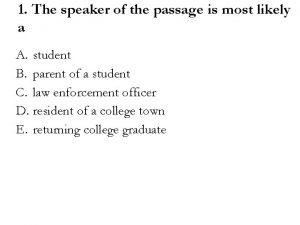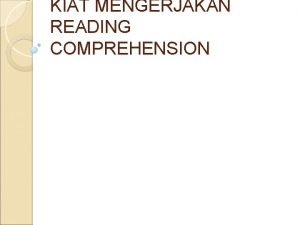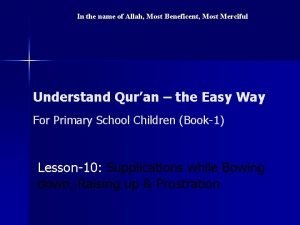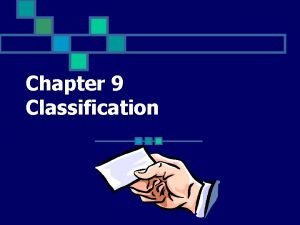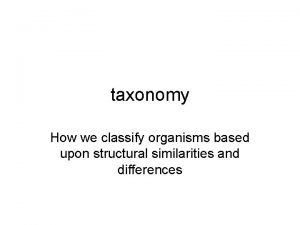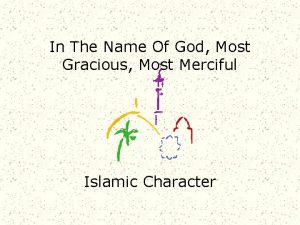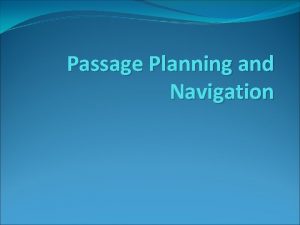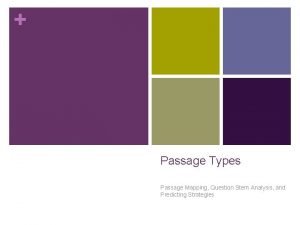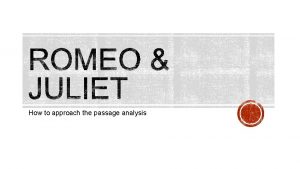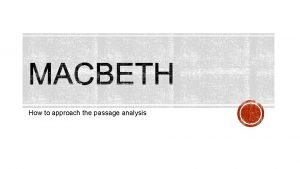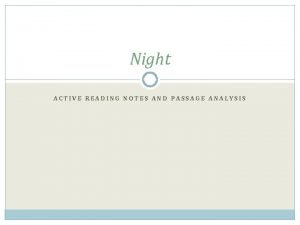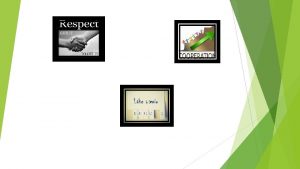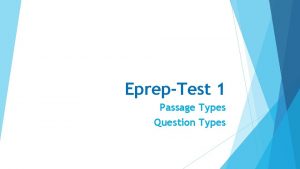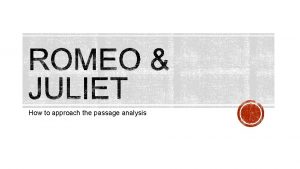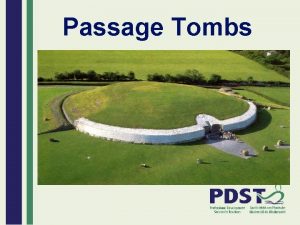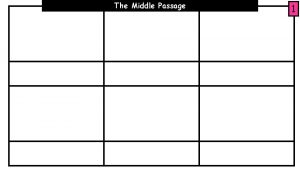1 The speaker of the passage is most















- Slides: 15

1. The speaker of the passage is most likely a A. student B. parent of a student C. law enforcement officer D. resident of a college town E. returning college graduate

2. In the first paragraph, the speaker characterizes the students primarily by their A. attitudes B. possessions C. physical appearance D. interactions with each other E. interactions with their parents

3. The dominant technique in the first paragraph is the use of A. hyperbole B. puns C. lists D. euphemisms E. abstraction

4. Which of the following best describes the order in which objects are presented in paragraph one? A. Old to new B. Masculine to feminine C. Large to small D. Familiar to exotic E. Personal to impersonal

5. In context, “brilliant” (line 23) is best interpreted as A. splendid B. scholarly C. important D. honorable E. unique

6. The words “invariably (23) and “as always” (26) contribute which of the following to the development of the passage I. They characterize the speaker as an experienced observer II. They introduce a sense of continuity relevant tot eh conclusion of the paragraph. III. They provide an indirect comment on the description in the first paragraph. A. B. C. D. E. I only I and III only II and III only I, II, and III

7. The students and parents are characterized in terms of which of the following aspects of their lives? I. Social II. Physical III. Financial IV. Intellectual A. B. C. D. E. I and II only I and III only II and IV only I, II, and III only I, III, and IV

8. The characterization of the parents in lines 26 -34 is marked by A. B. C. D. hints of changes that will occur in their lives repetition of descriptive terms implications about the nature of their lives an emphasis on their alienation from the scene in the passage E. a stress on the conflicts between the women and their husbands

9. In line 35, “they” refers to A. B. C. D. E. students (line 24) people’s names (lines 31) station wagons (line 35) liturgies or laws (line 37) parents (line 37)

10. In the second paragraph, the author develops a contrast between A. B. C. D. The energy of youth and the infirmity of age Worldly possessions and democratic idealism Academic success and extra-curricular activities The speaker’s sophistication and the student’s naiveté E. The parent’s smug view s and the speaker’s implied disapproval of them

11. In the second paragraph, the speaker characterizes the parents primarily by describing their A. attitudes B. possessions C. apparel D. differences from their children E. Interactions with their children

12. The primary rhetorical purpose of the passage is to A. characterize a group of people B. Defend the value of a certain life style C. Dramatize the importance of various possessions D. Illustrate the variety of amusements valued by most people E. condemn parents’ attitudes toward their children

13. Which of the following best describes the organization of the passage? A. Specific description leading to a generalization B. Illustration of an abstract idea by extended definition C. Application of a theory to a particular situation D. Amassment of imagery to convey a sense of chaos E. Narration of a series of events leading to a conflict

14. The speaker is best described as A. B. C. D. E. a resentful victim an unwelcome visitor an ironic commentator a curious investigator an apologetic participant

15. It can be inferred that the rhythm and diction of the concluding line (“a collection…) are intended to reflect A. the students’ philosophy B. the speakers’ deep seated beliefs C. an objective summary of the day’s events D. the parents’ views of their own importance E. the outsiders’ scorn for university graduates
 The speaker of this passage is
The speaker of this passage is I all of the questions correctly since
I all of the questions correctly since The paragraph preceding the passage most probably discusses
The paragraph preceding the passage most probably discusses In the name of allah, the most gracious, the most merciful
In the name of allah, the most gracious, the most merciful Almighty allah the most merciful
Almighty allah the most merciful In the name of allah the most beneficent the most merciful
In the name of allah the most beneficent the most merciful Name of organisms
Name of organisms In the name of allah, the beneficent, the merciful
In the name of allah, the beneficent, the merciful In the name of allah the most beneficent the most merciful
In the name of allah the most beneficent the most merciful The arrangement chapter 9
The arrangement chapter 9 Most general to most specific classification
Most general to most specific classification Aqeedah
Aqeedah The most gracious
The most gracious In the name of allah the most beneficent the most merciful
In the name of allah the most beneficent the most merciful In the name of god, most gracious, most merciful prayer
In the name of god, most gracious, most merciful prayer Most general to most specific classification
Most general to most specific classification
